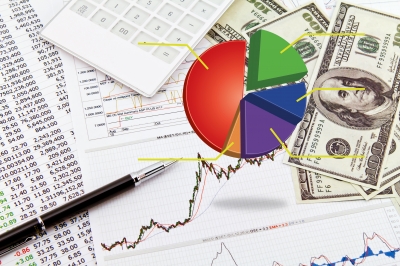Financial health is a function of both income and expenses. There’s no doubt that unless you control your spending, you can never improve your personal finances.
Charles Dickens put it this way in his classic book David Copperfield, “Annual income twenty pounds, annual expenditure nineteen six, result happiness. Annual income twenty pounds, annual expenditure twenty pounds ought and six, result misery.”
In today’s world of continuous spending and amusement we often forget Dickens advice to spend (and save) hard earned dollars wisely. As a result, hundreds of thousands of people are knee deep in debt. Or worse yet… drowning in debt…

However, with a few simple steps you can effectively control your impulse for spending and get your personal finances back on track. Below are some suggestions…
- Create a budget – For many people “budget” is a dirty word, but everyone needs to have a monthly budget (even multi-millionaires and lottery winners). No matter how large (or small) your income you need to be sure your income is greater than your expenses. And a budget is the only way to get a handle on your spending. If you don’t know where it is going how can you control it? A budget is just a way of ensuring that your income exceeds your expenses like Dickens recommended.It doesn’t have to be complicated. Simply start with a list of your monthly expenses on paper (or better yet in a spreadsheet so you can keep track of previous months as well). Fixed expenses are things like rent (or mortgage), insurance, car payments, cell phone bill, etc. These are things that are the same every month. You also have variable expenses like groceries, entertainment, etc. The best way to find all these expenses is to look at your previous credit card statements (or electronic bill pay statements). It may take a few months to be sure you haven’t missed any intermittent bills.You also need to know how much your take home pay is (income after taxes). Once you know your current income and expenses, you need to set targets for your expenses so that they allow for all your expenses to be paid (including an allowance for emergencies). Compare your income to your expenses regularly. At first you should compare your expenses to your income once every payday. Perhaps best is the day before you get paid. This will show you how much you (hopefully) have left over for that pay period. Once your spending is under control you might opt to only track it once a month but you really shouldn’t let it go longer because it is impossible to fix something that happened too far in the past.
- Using financial software – You can use financial software to keep a track of monthly spending. There are a number of financial software programs like Dave Ramsey’s Personal Finance Software , Quicken, etc. And even some apps where you just enter your monthly income and expenditures. Some software allows the user to sync the data between a device and a computer so you can track expenditures when you make them. But if you don’t use them it is just another wasted expense. A free spreadsheet might do just as well or better if you actually use it.
- Opt for bargain shopping – Opt for bargain shopping if possible. Although advertisements would have you believe otherwise, buying something just for the sake of its brand is not an example of smart shopping. There is no dearth of generic items that work just as well as the name brand product but at a much cheaper price. However, some cheap stuff is just junk. Buying quality when it comes to things that will last like furniture may actually save you money in the long run. The key is to do your research first and not buy anything on impulse. Evaluate your options, read real customer reviews, search the internet for deals and only spend on things you actually need. If you make it a habit to research every purchase over a certain dollar amount, never buy anything on the first day you think you need it, and don’t buy the latest greatest gadget when it first comes out. You will find that you get better deals and often decide that you don’t really need it after all. Sometimes you can even find brand name items at a drastically lower price due to things like a launch of a newer line of products.
- Plan for Saving and Investing– You should be saving at least 10% of your take home pay into a savings account for emergencies. Once you have built up an emergency fund equal to 3-6 months worth of income you should look into starting a long term investment fund. But before putting money in trading stocks or forex without knowing them properly, you should use a demo account in order to practice with “play” money. You can start this even if you don’t have any real money to invest yet.Once you are consistently making money in your practice money account, you can start using real money. But even then all good investors have money management techniques in place so that they don’t risk more than 1 or 2% of their investment capital on any one investment. This doesn’t mean that you need to invest in 50 – 100 different stocks. If you use “stop losses” set at 20% and you spread your investment funds out over 10 investments, theoretically, you can only lose 2% of your total capital on any one investment.Suppose you have $5000 to invest, if you carefully research investments and decide to invest in 5 mutual funds in 5 different sectors. So you put $1,000 in a Large Cap Fund, $1000 in a Small Cap Fund, $1000 in a Europe Fund, $1000 in an Emerging Market Fund, and $1000 in a Precious Metals/ Commodity Fund. Because these funds are all in different “markets” that gives you pretty good diversification. Often people buy several funds but they overlap so much that you really aren’t that diversified after all.You also tell your broker you want a 20% “stop loss” on each of these funds, so if any of them get down to $800 they would automatically be sold. That would be a $200 loss which is $200/$5000 or 4% of your total which would be over our 2% limit. But if you had 10 funds of $500 each your 20% loss would be $100 or 2% of the total.
See Also:
- Earning more money is not the answer
- Budgeting Your Family Finances
- The Wealthy Buy Assets, the Poor Buy Liabilities, and the Middle Class Buy Liabilities Believing They Are Assets
- Improve Your “Save-ability”
- High Performance Savings Accounts
 |
 |
 |
 |
| Quicken Deluxe | Dave Ramsey’s Personal Finance Software | The Total Money Makeover: A Proven Plan for Financial Fitness | SpendVelope Envelope Budget System |
Image courtesy of Jannoon028/ FreeDigitalPhotos.net.

